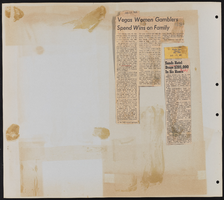Search the Special Collections and Archives Portal
Search Results
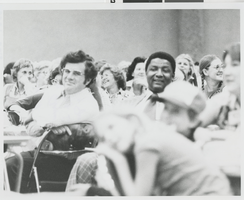
Photograph of Nevada senators Bill Hernstadt and Joe Neal, Las Vegas (Nev.) June 18,1977
Date
Archival Collection
Description
Image
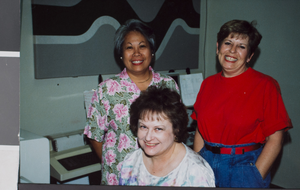
Photograph of members of Cataloging Department, University of Nevada, Las Vegas, May 1992
Date
Archival Collection
Description
Pictured from left to right: (standing) Vicky Diaz and Shari Drouin and (seated) Mary Ellen Olson. All three women were part of the Cataloging Department staff at the University of Nevada, Las Vegas (UNLV) Libraries.
Image
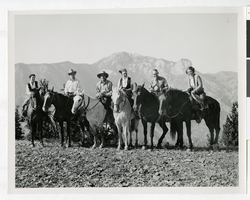
Photograph of people on horses, 1940s
Date
Archival Collection
Description
Image
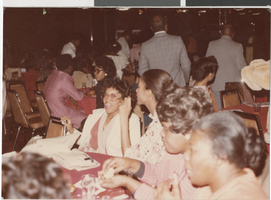
Photograph of the audience at the Delta Sigma Theta Sepia Fashion Show, circa 1972
Date
Archival Collection
Description
Color photograph of women gathered for the Delta Sigma Theta Sepia Fashion Show.
Image
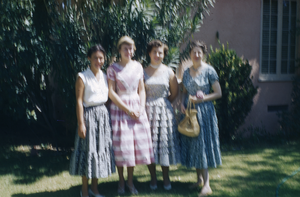
Photograph of Maureen Wilson and others, Las Vegas, 1950s
Date
Archival Collection
Description
Image
Credit Women's Club of Las Vegas, Nevada
Corporate Body Alternate Name
No description.
Corporate Body
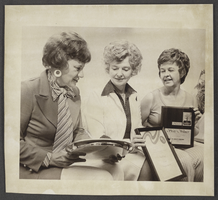
Photograph of the Betty Lee Lamping, Ruth Naylor, and Phyllis Crawley, Clark County, Nevada, May 13, 1976
Date
Archival Collection
Description
Image

Transcript of interview with Margaret Price by Joanne Goodwin, March 5, 1997
Date
Archival Collection
Description
When farm-girl-turned-waitress, Margaret "Maggie" Price, came to Las Vegas from Ohio in 1950 with her husband, Francis "Frank" Price, she had no idea what was in store for her in the hot desert oasis. Maggie's career spanned a period of historical transformation in Las Vegas when Downtown was becoming overshadowed by the development on the Las Vegas Strip. Vaudeville and striptease acts were still alive, but the arrival of big-named acts, such as the Rat Pack, Barbara Streisand, and the King himself, Elvis Presley, were just beginning to take the lead. Organized crime was still a prominent part of the culture and brothels still operated somewhat openly. The three decades Maggie and Frank worked in Las Vegas provided them with front-row seats for the birth, transformation, and occasional death of numerous casinos, including the Sahara, the Flamingo, the Sands, the Dunes, the Tropicana, and the International. Initially going to work as a waitress at the El Rancho Vegas, Maggie
Text
Kay Rodriguez oral history interview
Identifier
Abstract
Oral history interview with Kay Rodriguez conducted by Irene Rostine on November 14, 1997 for the Women's Research Institute of Nevada (WRIN). Rodriguez discusses moving to Las Vegas, Nevada from South Dakota to get a divorce in 1959. Rodriguez describes working as a waitress at the Dunes and the Riviera and making a new life in Las Vegas. She discusses her work in the real estate industry and the challenges of being a working mother. Rodriguez also talks about opening her own real estate office, and the demographics of the real estate industry during the 1960s.
Archival Collection

